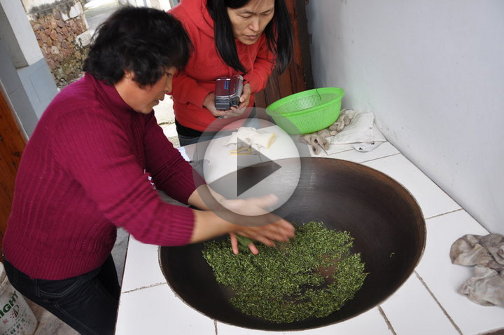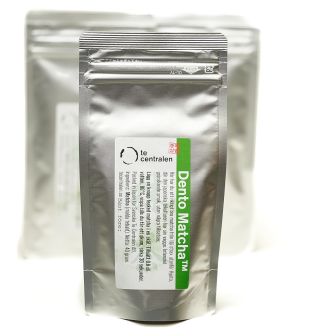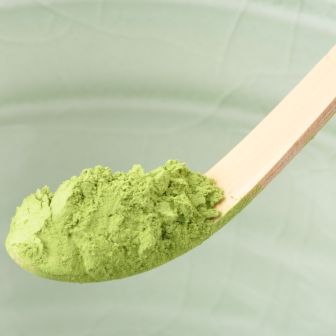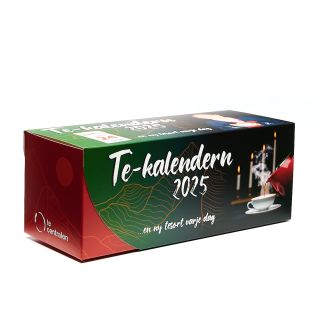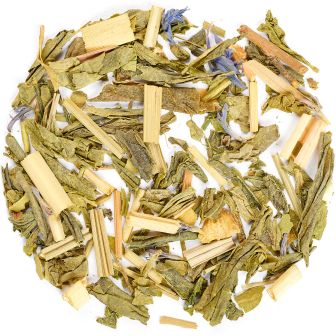#1Swedens oldest online teshop
Checkout using your account
Checkout as a new customer
Creating an account has many benefits:
- See order and shipping status
- Track order history
- Check out faster
Green tea - delicate tastes, full of antioxidants
Green tea is the predominant type of tea in China and Japan, and what is usually ment when referring to "tea". The taste is lighter than black tea, with more greenish influences of herbs, grass and flowers. The main categories of green tea are actually Chinese and Japanese. In China, most green teas are roasted or pan-fried, while the Japanese normally steam their teas. Through the heating process, there is a natural enzyme in the tea leaves that is destroyed. Without this enzyme, the leaves cannot oxidize easily and remain green. Green tea is unoxidized, which makes it full of healthy antioxidants.
Click on the picture to see a video about the production (Swedish only).
Most Popular Right Now
What exactly is green tea?
All "real" teas comes from the tea bush, camellia sinensis. It comes in two varieties, but it's not actually what determines whether the tea is black or green, but what happens after harvesting.
Green tea is always heated after picking. The heating process destroys an enzyme (polyphenol oxidase) which allows green tea to remain green. Black tea, on the other hand, is allowed to react with the oxygen in the air, and the leaves darken, like when you cut an apple and it turns brown. Green tea is thus unoxidized, which means that the beneficial antioxidants remain. Green tea is more sensitive than black tea, so be sure to store it in a dry, cool and dark place to get the most flavor.
Is green tea caffeine-free?
No, it is not. It contains the same amount of caffeine as black tea, but.... it's not that simple. First, different varieties of the tea bush contain different amounts of caffeine. Also, it matters a lot when the leaves are picked. A rule of thumb is that small, tender leaves contain more caffeine than large ones. You might think that when the leaves are small, the plant produces caffeine to protect itself from insects, not to keep us awake at night. When the leaves get bigger with thicker cell walls, the leaves are not as sensitive and the caffeine content is lower per weight.
Secondly, tea also contains calming substances such as theanine, which is more abundant in green tea. So the effect of the caffeine may not be as strong.
Is green tea really healthy?
Green tea contains lots of antioxidants, so that's a good start. There is also some research that looks promising. For example, a Swedish doctoral thesis from 2009 which shows that green tea has an ACE-inhibiting effect, in the same way as antihypertensive drugs. (Of course, there's no need to experiment with changing any medication on your own, check with your doctor first!)
There are also a number of alarm reports that pop up at irregular intervals. These are often about dietary supplements that have caused liver damage, and the link to tea as a beverage is rather unclear.
Which green tea is best?
This may be related to the previous question, i.e. which is the most beneficial. If we want to maximize the intake of antioxidants, then matcha is in a class of its own. It's ground tea leaves, so you get all the benefits, including the caffeine. It can be good to drink in moderation, and most people recommend drinking no more than one cup per day.
How do you brew green tea?
It depends on the tea, but here's a start: Take 1 hefty teaspoon of leaves per cup (2.5 dl), heat the water to 80°C, and pour over the leaves. Strain after 2-3 minutes.
Why 80°C? Well, all green teas benefit from having a slightly lower water temperature when brewing. Otherwise, bitter substances will be dissolved and the taste will be harsh.
How do you know when it is 80°C? Approximately when bubbles "the size of fish eyes" start to appear at the bottom of the pot.
Most green teas can be brewed several times on the same leaf. You just add new water and let it steep again. But it should be on the same day. Experiment and you will find the way that suits you best.
Is there a difference between Chinese and Japanese green tea?
Yes, the heating we talked about above is done in different ways. Chinese green tea is "woked", i.e. roasted in a pan (wok). This process is done by hand for the finer varieties, and it can take 30-45 minutes to roast a batch of 500 grams to 1 kg. The color of the finished leaves is pale green, with a fresh scent of hay and herbs.
Japanese tea is instead steamed for a short time. The time can vary depending on the variety, but steaming for several minutes destroys the leaves. The color is bright green, with a chlorophylly scent of fresh grass and sometimes sea.
Japanese green tea must be allowed to drain between steepings, while Chinese green tea can often be left in the cup or glass. When it gets too strong, just add more water.

